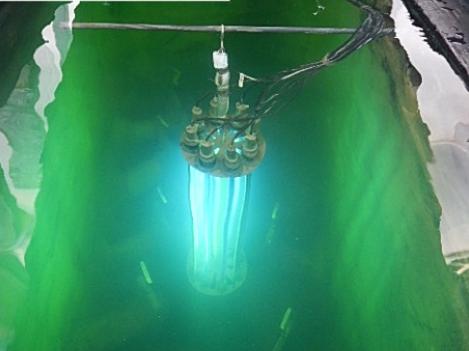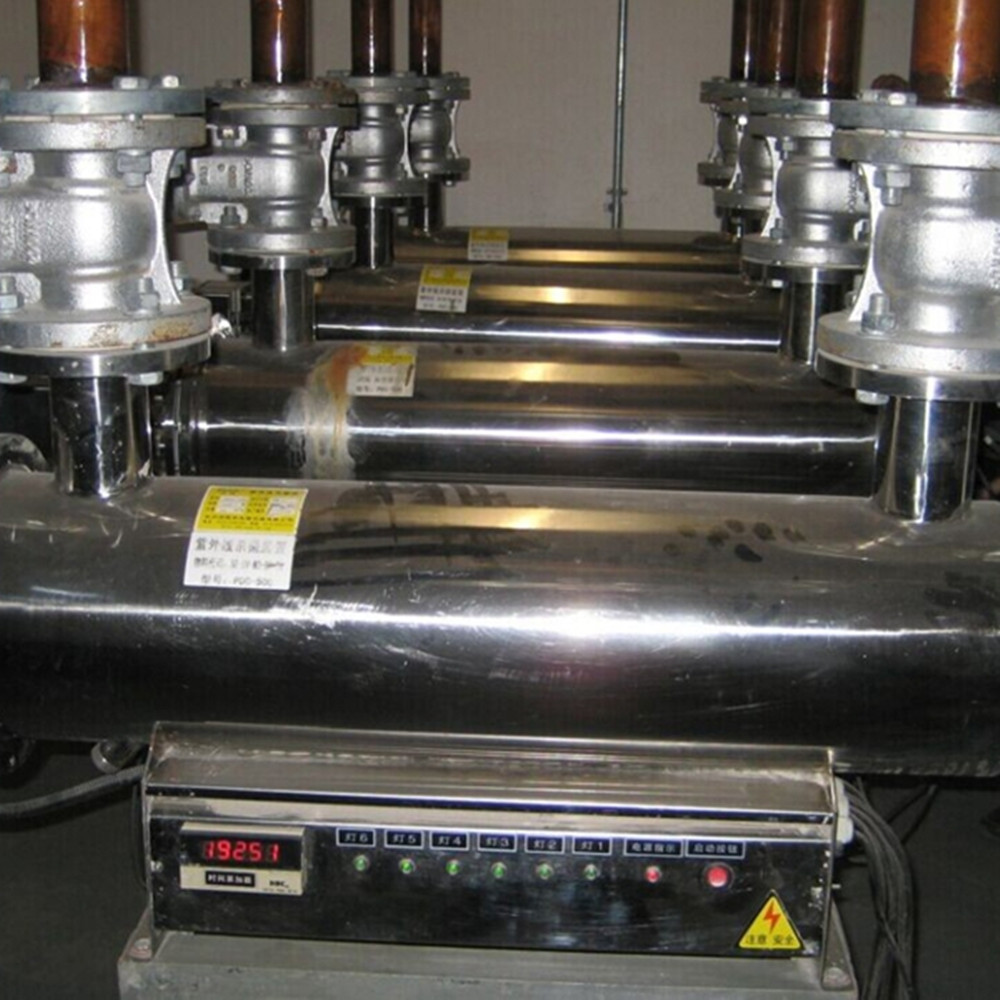The following methods can be used to remove residual chlorine from water in agricultural water, aquaculture water, or household tap water:
First,UVC UV Lamp Irradiation Method
l Principle: The UV germicidal lamp emits ultraviolet light at a specific wavelength of 254nm to irradiate the water and remove residual chlorine.
l Operation: The UV germicidal lamp is either immersed in the water to be treated or installed at the outlet of a flow-through water system. The ultraviolet light directly irradiates the water to remove residual chlorine. When immersing the lamp in the water, factors like water volume and tank size need to be considered to choose the appropriate lamp size and power. For flow-through installation, factors such as water flow rate and speed must be taken into account when selecting the UV lamp power.
l Advantages and Disadvantages: This method is simple and easy to implement but requires regular lamp replacement. If using LIGHTBEST brand UV germicidal lamps, usually, it takes about a year to replace the lamp tube with a new one.

(submersible UV germicidal lamp )

(Overcurrent UV sterilizer)
Secondly, static evaporation method
l Principle: Through the passage of time, residual chlorine in water naturally evaporates.
l Operation: Place tap water, agricultural water, or aquaculture water in a container and let it sit for a period of time. For tap water, it is usually possible to remove most of the residual chlorine by allowing it to stand for 4-8 hours or 24 hours; For aquaculture water, it can be dried for four to five hours under sufficient sunlight, while it takes 24 hours in the absence of light.
l Advantages and disadvantages: This method is simple and easy to implement, without the need for additional equipment and costs, but it is time-consuming.
Thirdly, heating and boiling method
l Principle: Heating can promote the rapid evaporation of chlorine gas.
l Operation: Bring water to a boil and boil for a period of time, such as 10 minutes, to reduce the residual chlorine content in the water.
l Advantages and disadvantages: This method is fast and effective, but may increase energy consumption and costs, and is not very suitable for situations where a large amount of water is used.
Fourth, activated carbon adsorption method
l Principle: Activated carbon has good adsorption performance and can adsorb chlorine gas and other impurities in water.
l Operation: Contact activated carbon with water for a period of time, and the activated carbon can adsorb residual chlorine in the water. For agricultural and aquaculture water, activated carbon filters can be used for treatment.
l Advantages and disadvantages: Activated carbon adsorption method has significant effects and can treat a large amount of water, but it requires regular replacement of activated carbon and may slightly increase the pH value of water.
Fifth, Vitamin C Reduction Method
l Principle: Vitamin C has reducibility and can react with chlorine gas to remove it.
l Operation: Add vitamin C tablets or powder to water, stir for a moment, and let it settle. For aquaculture water, accelerating 14 milligrams of vitamin C tablets per ten liters of water is sufficient.
l Advantages and disadvantages: This method is easy to operate and vitamin C is harmless to aquatic organisms such as fish, but it may lower the pH value of the water.
Sixth, aeration method
l Principle: By increasing the contact area between water and air, the escape of chlorine gas is accelerated.
l Operation: Use aeration equipment to inject air into the water to promote the volatilization of chlorine gas.
l Advantages and disadvantages: This method is suitable for treating large amounts of water and can be combined with other methods to improve efficiency, but requires additional equipment and energy consumption.
Seventh, use dechlorination agents
l Principle: Some chlorine removal agents (such as Yulebao) can react with residual chlorine in water to remove it.
l Operation: Add dechlorination agent to water according to the instructions. For example, Yulebao usually takes one slice every ten liters of water.
l Advantages and disadvantages: This method is fast and simple, but requires the purchase of chlorine removal agents, and the effectiveness of chlorine removal agents may vary from brand to brand.
In summary, there are various methods for removing residual chlorine from water, and the appropriate method can be selected according to specific circumstances. When choosing a method, factors such as treatment effectiveness, cost, ease of operation, and impact on water quality and organisms need to be considered.
Post time:2025-01-20 14:50:54

